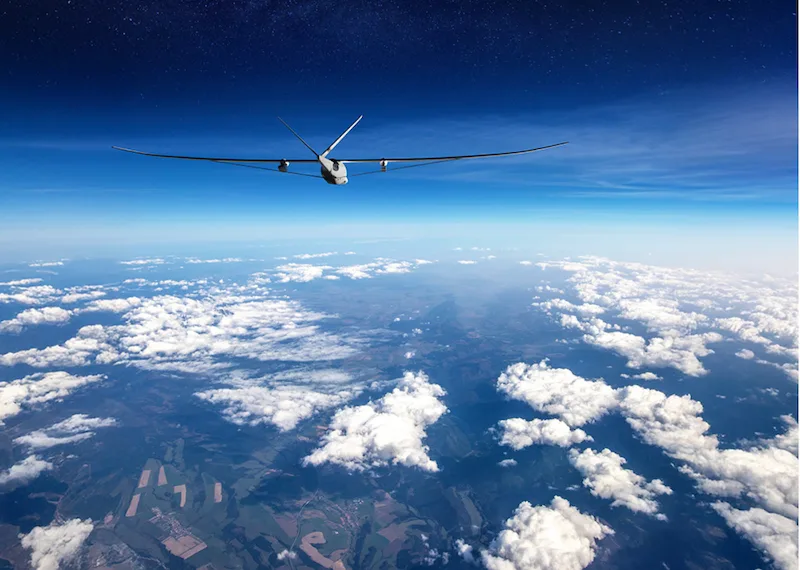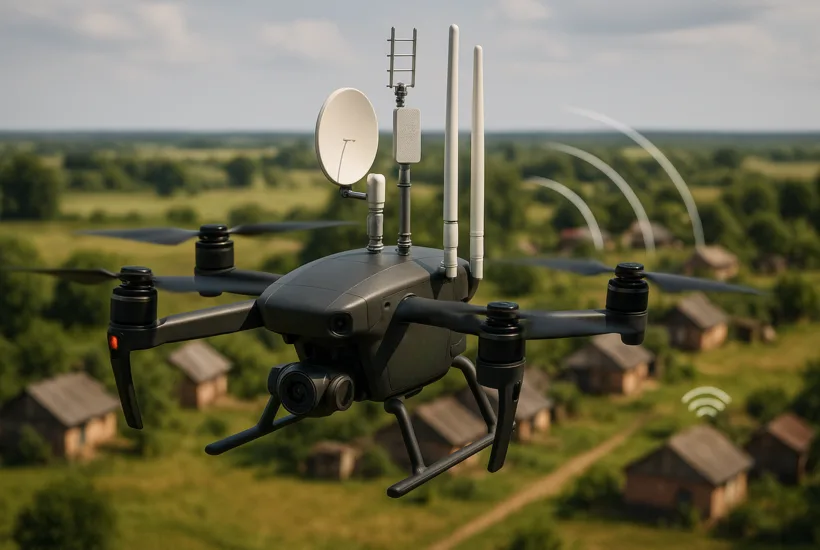- World Mobile launches Drone-Based, decentralized telecom project using hydrogen-powered drones flying at 60,000 feet in the stratosphere.
- The drones can provide wireless coverage of up to 15,000 square kilometers per aircraft, outperforming satellite-based infrastructure.
- Despite the potential, World Mobile faces several technical and regulatory challenges to launch and maintain the aerial network.
World Mobile has announced a bold new initiative to transform global telecommunications by using unmanned aerial drones to create a decentralized, blockchain-enabled 5G network. The company has partnered with Indonesian telecom provider Protelindo to launch World Mobile Stratospheric, an ambitious project that aims to bridge gaps in traditional communication infrastructure worldwide.
The initiative involves hydrogen-powered drones that will fly at 60,000 feet in the stratosphere to provide wireless services to users below. Each drone will be capable of covering up to 15,000 square kilometers using 450 guidable beams. According to Charles Barnett, Chief Business Officer of World Mobile Group, this network will significantly outperform satellite-based telecommunications, offering 6 milliseconds of total latency and delivering service that is “up to 18 times cheaper” per gigabyte compared to space-based infrastructure.
The World Mobile Stratospheric project seeks to tap into the growing $98.3 billion market of aerial-based and satellite communications platforms. The company’s blockchain approach offers an innovative alternative to the traditional telecommunications infrastructure, creating decentralized physical networks to reach underserved communities.
Newsletter
Get weekly updates on the newest crypto stories, case studies and tips right in your mailbox.
Technical and regulatory challenges of stratospheric communication
While the technology behind the stratospheric drones is promising, there are several significant technical challenges World Mobile must address. The hydrogen-powered drones, which have a 56-meter wingspan and weigh four tons, are designed to remain airborne for up to nine days before needing to land for refueling. To achieve maximum fuel efficiency and ensure that the drones can withstand weather conditions at lower altitudes, World Mobile must develop lightweight but robust drones.
Additionally, the drones will operate in the stratosphere, a region above weather systems and with calmer winds. However, this altitude still poses challenges, such as exposure to cosmic radiation that could damage electronic components. The drones will also face extreme heat from the sun, requiring efficient heat management systems to prevent damage to sensitive equipment.
Moreover, navigating regulatory hurdles from authorities like the Federal Aviation Administration (FAA) in the United States and the European Aviation Safety Agency (EASA) will be crucial. World Mobile needs to secure permits to fly unmanned aerial vehicles (UAVs) and comply with aviation safety standards, which adds another layer of complexity to the project.

Source: World Mobile Stratospheric
Facing competition from ground-based and space-based platforms
As World Mobile ventures into the aerial communications market, it faces significant competition from both terrestrial and space-based networks. One of its competitors, Helium Mobile, operates a decentralized wireless network that combines distributed nodes with telecom partnerships to extend wireless coverage to underserved areas. Helium’s approach is similar but utilizes ground-based infrastructure instead of drones.
Another major competitor is Starlink, Elon Musk’s satellite-based internet service, which aims to provide connectivity to remote regions. Barnett notes that while Starlink focuses on remote areas with no existing cellular infrastructure, World Mobile Stratospheric is targeting regions with higher population densities where mobile users can benefit from faster and cheaper mobile services.
Although Starlink provides internet access through satellites, World Mobile’s approach allows for faster, more efficient coverage in densely populated areas, offering advantages for urban connectivity.
Bridging gaps with innovation
World Mobile’s drone-based communication platform marks a significant step forward in the quest for decentralized, affordable, and efficient wireless services. By utilizing stratospheric drones powered by hydrogen, the project promises to bridge the global telecom gap, providing low-cost connectivity to underserved regions. However, the company will need to overcome regulatory hurdles and technological challenges to make this ambitious vision a reality. If successful, World Mobile could revolutionize the telecommunications sector, offering a cost-effective alternative to traditional satellite and ground-based systems.













